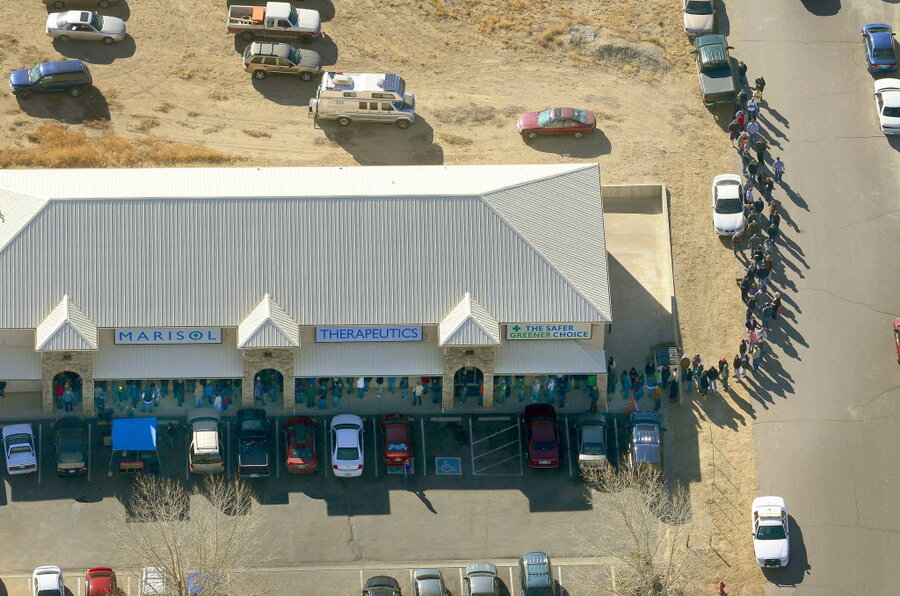Reason to pause on pot legalization
Loading...
On Nov. 8, nine states will vote on whether to legalize marijuana – four for medical use and five for adult consumption. Three states and the District of Columbia have already legalized recreational use of the drug while 25 states allow medical marijuana. If California, which has the largest population, approves full legalization, many other states could follow in coming years.
Yet Americans voting this fall in those nine states may want to take notice of a rising anti-pot movement in Colorado, which in 2014 became the first state to allow the sale of weed.
In Pueblo County, the negative effects of a booming legal – and illegal – pot industry have upset so many residents that county commissioners voted unanimously last month for a ballot question in November that would ban the sale and growing of commercial marijuana. An activist group, Citizens for a Healthy Pueblo, had petitioned for the measure, citing rising crime as well as marijuana sales and growing operations near schools. Hospitals have seen a sharp rise in marijuana-related admissions. And police are busier than ever busting operations that illegally sell marijuana in other states.
If the measure passes, Pueblo’s rebellion may spread. Colorado has experienced a spike in traffic-related fatalities attributed to marijuana use (a 48 percent increase in 2013-15 over 2010-12), according to the Rocky Mountain High Intensity Drug Trafficking Area. In 2013-14, both adults and youth in the state ranked highest in the nation for pot use. And seizures of illegal transport of marijuana by both state police and the US Postal Service also rose dramatically.
Colorado now has twice as many retail marijuana stores as it does McDonald’s. With so many problems related to pot, the state may want to ask if the additional tax revenue from the sale of legal marijuana is worth it. That revenue amounted to only about 0.5 percent of the 2015 fiscal year budget. Colorado’s experience deserves more attention as voters in other states decide whether to follow its example.





